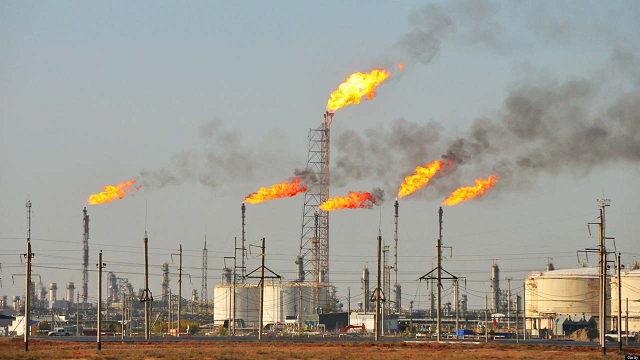Oil prices saw an uptick on Thursday during early global trading, spurred by ongoing concerns around supply disruptions and fluctuating demand.
Brent crude, the international oil benchmark, rose to $75.31 per barrel, while the US West Texas Intermediate (WTI) climbed to $71.29 per barrel.
The price increase follows data released by the American Petroleum Institute (API) earlier in the week, which reported a significant build-up in US crude oil inventories.
According to API, commercial crude inventories increased by 1.64 million barrels, surpassing market expectations of a 700,000-barrel rise. This unexpected surplus indicated weaker domestic demand, initially pushing prices downward before the market rebounded.
Brent crude, which had shed 1.4% in value the previous day, rallied on Thursday morning, edging closer to the $76 per barrel mark.
Analysts from ING highlighted that the market remains entangled between demand concerns and supply risks, particularly related to geopolitical tensions in the Middle East. The strategists noted that the market outlook for 2025, which suggests a more balanced oil supply, is also influencing current price movements.
The US Energy Information Administration (EIA) reported an even larger inventory build-up, with crude oil stockpiles growing by 5.47 million barrels in the last week. This figure far exceeded both market forecasts and the API’s earlier estimate of 1.64 million barrels, adding further volatility to the market.
The report also noted that refiners had increased their utilisation rates by 1.8 percentage points, boosting crude inputs by 329,000 barrels per day (b/d). However, while gasoline inventories rose by 878,000 barrels, distillate stocks dropped by 1.14 million barrels.
On the demand side, gasoline demand saw an uptick, but the overall demand for refined products fell by 446,000 b/d week-on-week, signalling potential challenges in the energy market’s demand outlook.
Meanwhile, supply risks remain high as tensions in the Middle East escalate. Israeli military actions continue to affect the market, with recent strikes targeting Hezbollah commanders in the region. On Tuesday, Israel confirmed the elimination of Hisham Safieddine, Head of Hezbollah’s Executive Council, and Ali Hussein Hazima, Commander of Hezbollah’s Intelligence Headquarters, in military operations. The ongoing conflict is contributing to concerns about potential disruptions to oil supplies from the region.
As the market navigates these conflicting forces of supply uncertainty and demand fluctuation, analysts predict continued volatility in oil prices in the coming weeks.













